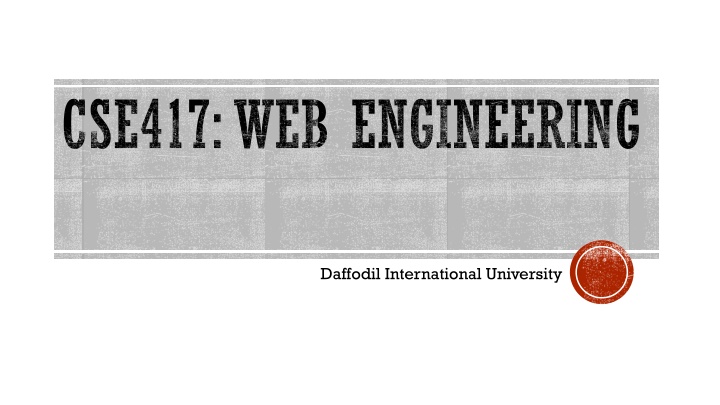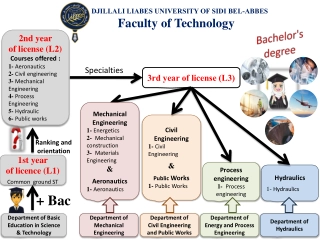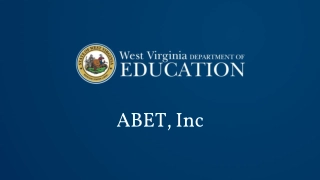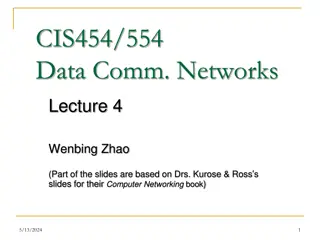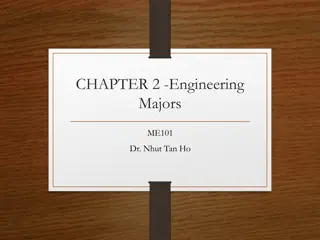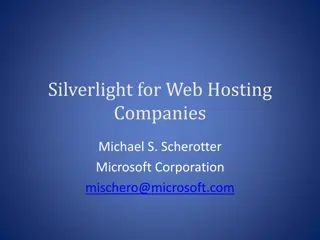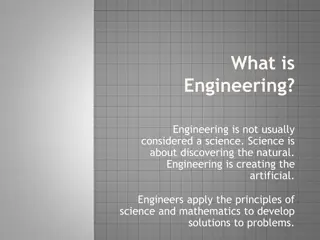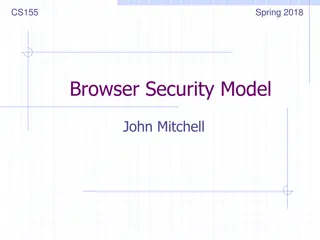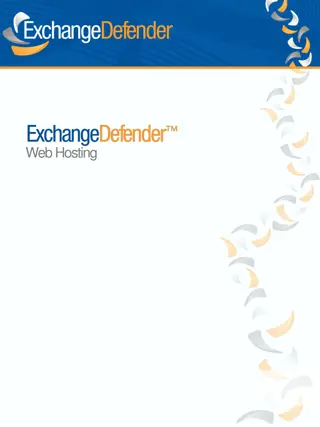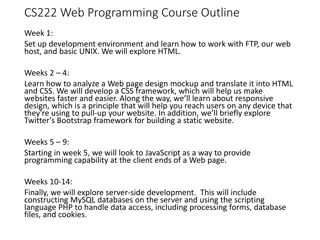Introduction to Web Engineering at Daffodil International University
Dive into the world of web engineering at Daffodil International University with a focus on Internet fundamentals, client-server paradigm, and the history of the web. Explore key concepts like the distinction between the Internet and the World Wide Web, protocols, network connectivity, and advancements in technology. Stay updated on course policies, assignments, and contact details to enhance your learning experience. Join us on this educational journey to grasp essential tools and skills for web development.
Download Presentation

Please find below an Image/Link to download the presentation.
The content on the website is provided AS IS for your information and personal use only. It may not be sold, licensed, or shared on other websites without obtaining consent from the author.If you encounter any issues during the download, it is possible that the publisher has removed the file from their server.
You are allowed to download the files provided on this website for personal or commercial use, subject to the condition that they are used lawfully. All files are the property of their respective owners.
The content on the website is provided AS IS for your information and personal use only. It may not be sold, licensed, or shared on other websites without obtaining consent from the author.
E N D
Presentation Transcript
CSE417: WEB ENGINEERING Daffodil International University
OVERVIEW Course Policies- Zero Tolerance on Plagiarism Grading will be based on university policy Contact Details- Office Cell [Text Preferred] Email [Write E-mail subject properly] Google Classroom Code BLC/Online Module Link- [Will be updated soon]
COURSE STRUCTURE Two lecture sessions and one lab session per week Everything and anything discussed in lecture session will be implemented in the following lab At least FOUR major assignments in LAB as a part of continuous evaluation Deadlines will be strictly maintained Notes and additional resources will be provided to read/go through beforehand
CONTENTS- Internet and the Web Client-Server Paradigm LECTURE OUTCOME Differentiate between Web and Internet Understand Client-Server Paradigm Select the appropriate tools
WEB INTERNET Internet A physical network of networks connecting billions of computers and other devices using common protocols (TCP/IP) for sharing and transmitting information World Wide Web [Old] A collection of interlinked multimedia documents (web pages stored on internet connected devices and accessed using a common protocol (HTTP)) Key distinction: The internet is hardware plus protocols while the world wide web is software plus protocols The world wide web is an application using the internet to transmit information, just like many others, for example, email, SSH, FTP
HISTORY(1/3) 1969: ARPANET (precursor of the Internet) 1971: First e-mail transmission, File Transfer Protocol 1972-1980: Vadic VA3400 modem (1,200 bit/s over phone network) RSA public-key cryptography EPSS/SERCnet (first UK networks between research institutions) 1981: IBM PC 5150 1982: TCP/IP standardized 1985 : FTP on TCP standardized
HISTORY(2/3) mid 1980s: Janet (UK network between research institutions with 2 Mbit/s backbone and 64 kbit/s access links) 1986:U.S. Robotics HST modem (9600 bit/s) TCP/IP networks expand across the world Late 1980s: TCP/IP networks expand across the world 1991: Janet adds IP service Gopher / World Wide Web GSM (second generation cellular network) digital, circuit switched network for full duplex voice telephony 1995: First public releases of JavaScript and PHP 1997: World Wide Web slowly arrives on mobile phones
HISTORY(3/3) Current Applications: Communication via e-mail, Twitter, etc Joint manipulation of concepts and actions: Collaborative editing, Crowd sourcing, Wikis (Wikipedia) E-Commerce: Online auctions and markets Social media, social networks, virtual learning environments
WHERE THE WEB WAS BORN Tim Berners-Lee, a British scientist, invented the World Wide Web (WWW) in 1989, while working at CERN. The Web was originally conceived and developed to meet the demand information-sharing between scientists in universities and institutes around the world. Go to CERN s official site for automated
HOW THE WEB BEGAN An image of the first page of Tim Berners- Lee's proposal for the World Wide Web in March 1989
WEB INTERNET (Again?) World Wide Web [New] An infrastructure that allows to easily develop, deploy, and use distributed systems Distributed systems A system in which components located on networked computers communicate and coordinate their actions by passing messages in order to achieve a common goal More
WEB INTERNET (Ok! Last Time!) World Wide Web [New] An infrastructure that allows to easily develop, deploy, and use distributed systems Key points: The internet already eased the development of distributed systems by providing an appropriate infrastructure for that The world wide web eases the development and deployment of interfaces to such system via a combination of web pages and ubiquitous web bowsers The world wide web then allows every (authorized) person to instantaneously interact with such systems Search engines allow users to easily find distributed systems that are useful to them
WEB PROGRAMMING VERSUS APP PROGRAMMING Web Programming relies on web browsers as means to render user interfaces that are coded in HTML/CSS Web Programming relies on HTTP as the main protocol to exchange information within a distributed system Web-based apps use a mix of server-side and client-side computing Web-based apps can be changed almost instantaneously and on a per-user / per- use basis App Programming relies on directly coded native interfaces (Swift/Java) App Programming can rely on arbitrary protocols to exchange information within a distributed system Programmers have more flexibility and more control when developing traditional apps It is not obvious which approach is better and in which situation
STATIC VS. DYNAMIC WEBPAGES(1/2) STATIC WEBPAGE Many Web pages are still static in nature. Contents (text/links/images) are the same each time the webpage is accessed. e.g., online documents, many personal homepages HyperText Markup Language (HTML) and Cascading Style Sheets (CSS) are used to specify text, image, and page format, along with styling the page for various effects (backgrounds, colors, table layout, page margins, etc.).
STATIC VS. DYNAMIC WEBPAGES(2/2) DYNAMIC PAGE As the Web continues towards more and more online services and e-commerce continues to grow, Web pages must also provide dynamic content. Pages can be fluid, changeable (e.g., rotating banners, inclusion of real-time data, etc.). Must be able to react to the user s actions, request and process info, tailor services. e.g., amazon.com, YouTube, any e-commerce website, online email services, etc.
DISTRIBUTED SYSTEM Also known as distributed computing System with multiple components Located on different machines that communicate and coordinate actions Appear as a single coherent system to the end-user. Benefits and challenges of distributed systems Computing happens independently on each node easy and generally inexpensive to add additional nodes and functionality as necessary Fault-tolerant as they can be made up of hundreds of nodes that work together The system generally doesn t experience any disruptions if a single machine fails Efficient because work loads can be broken up and sent to multiple machines
TYPES OF DISTRIBUTED SYSTEMS Client-server Clients contact the server for data, then format it and display it to the end-user. The end-user can also make a change from the client-side and commit it back to the server to make it permanent. Peer-to-peer There are no additional machines used to provide services or manage resources. Responsibilities are uniformly distributed among machines in the system, known as peers, which can serve as either client or server. Three-tier Information about the client is stored in a middle tier rather than on the client to simplify application deployment. This architecture model is most common for web applications. n-tier Generally used when an application or server needs to forward requests to additional enterprise services on the network.
CLIENT-SERVER PARADIGM You already know this from CSE313: Computer Networks Let s revisit, Server program sends copies of documents on request Requires computer on Internet and server software always running Client program sends message to server to request copy of document Clients and servers communicate via TCP/IP Client and server may establish "persistent connection" so that all pages after first arrive more quickly More
CLIENT-SIDE PROGRAMMING(1/2) Can download program with a webpage, execute the program on the client s machine. Simple, generic, but sometimes insecure (e.g. cross-site scripting attacks). JavaScript A scripting language for Web pages, developed by Netscape in 1995. Uses a C++/Java-like syntax, so familiar to many programmers, but simpler. JavaScript is good for adding dynamic features to Web page, controlling forms, and the GUI. Requires users to have this technology enabled on their browsers.
CLIENT-SIDE PROGRAMMING(2/2) Jquery first released in 2006, is a JavaScript library to help with cross-browser compatibility issues. Java applets Can define small, special-purpose programs in Java called applets. Provides (almost) full expressive power of Java (but with more overhead). Good for data-heavy tasks or more complex tasks such as graphics
SERVER-SIDE PROGRAMMING(1/2) Can store a program on a web server, and supply a link from a webpage to execute that program. And you can also accept input from a user in terms of filling in blanks and/or file upload(s), etc. The process of doing this can be more complex, requires server privileges, but can still be (mostly) secure with proper precautions. Common Gateway Interface (CGI) programming Programs are written to conform to the CGI. When a webpage submits, the data from the page is sent as input to the CGI program. CGI program executes on the server and sends its results back to browser as a webpage. Good if computation is large/complex or requires access to private data.
SERVER-SIDE PROGRAMMING(2/2) Other server-side programming technologies include: Active Server Pages (ASP) Java Servlets PHP (You will learn this one in this course!) Server Side Includes Ajax (using JavaScript on the client side too) Some of these are vendor-specific alternatives to CGI (such as Microsoft s ASP). They often provide many of the same capabilities as CGI programs but use HTML-like tags (such as PHP). Some of these technologies might require functionality to be enabled in the client s browser (e.g. Ajax)
AN EXERCISE Pick some of your favorite websites and try to identify the static components the dynamic components Which sites are using JavaScript? Which are using Java applets? Which are using server-side elements such as CGI programs? READINGS http://cgi.csc.liv.ac.uk/~ullrich/COMP519/notes/lect01.pdf https://cgi.csc.liv.ac.uk/~martin/teaching/comp519/NOTES/overview.pdf
REFERENCES https://home.cern/science/computing/birth-web/short-history-web https://www.cs.purdue.edu/homes/bxd/inter/tableOfContents.html
ACKNOWLEDGEMENT This module is designed and created with the help from following sources- https://cgi.csc.liv.ac.uk/~ullrich/COMP519/ http://www.csc.liv.ac.uk/~martin/teaching/comp519/ My sincere grattitude to Professor Hustadt and Professor Martin for their support and materials. Following lecture materials also use different sources including this and will be mostly mentioned at reference section.
